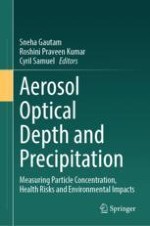2024 | OriginalPaper | Buchkapitel
Review of the Role of Aerosols in the Spread of COVID-19
verfasst von : Nishi Srivastava
Erschienen in: Aerosol Optical Depth and Precipitation
Verlag: Springer Nature Switzerland
Aktivieren Sie unsere intelligente Suche, um passende Fachinhalte oder Patente zu finden.
Wählen Sie Textabschnitte aus um mit Künstlicher Intelligenz passenden Patente zu finden. powered by
Markieren Sie Textabschnitte, um KI-gestützt weitere passende Inhalte zu finden. powered by
